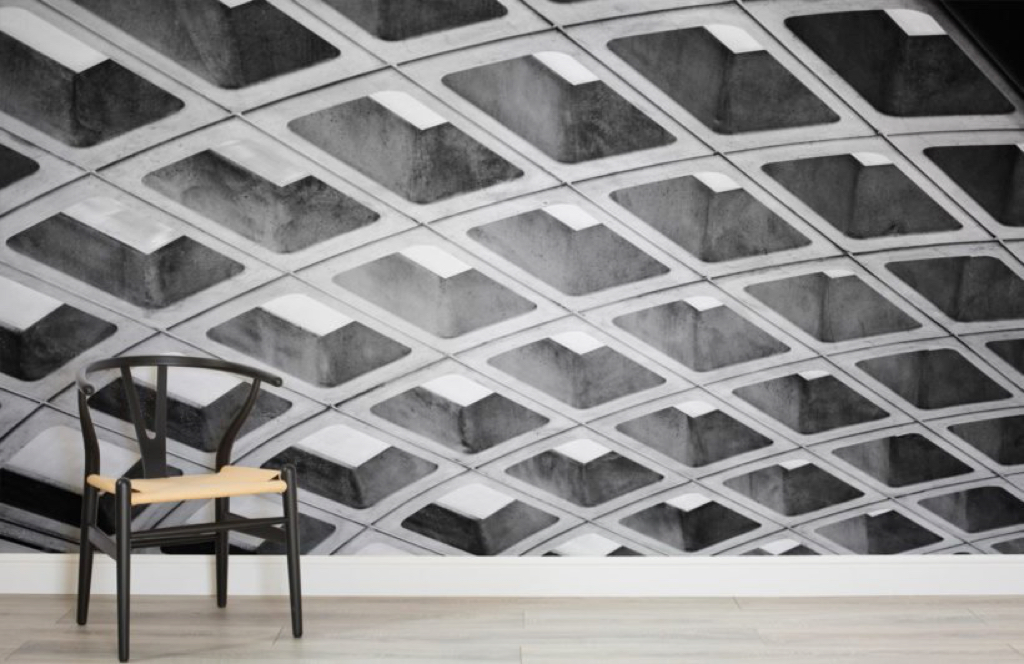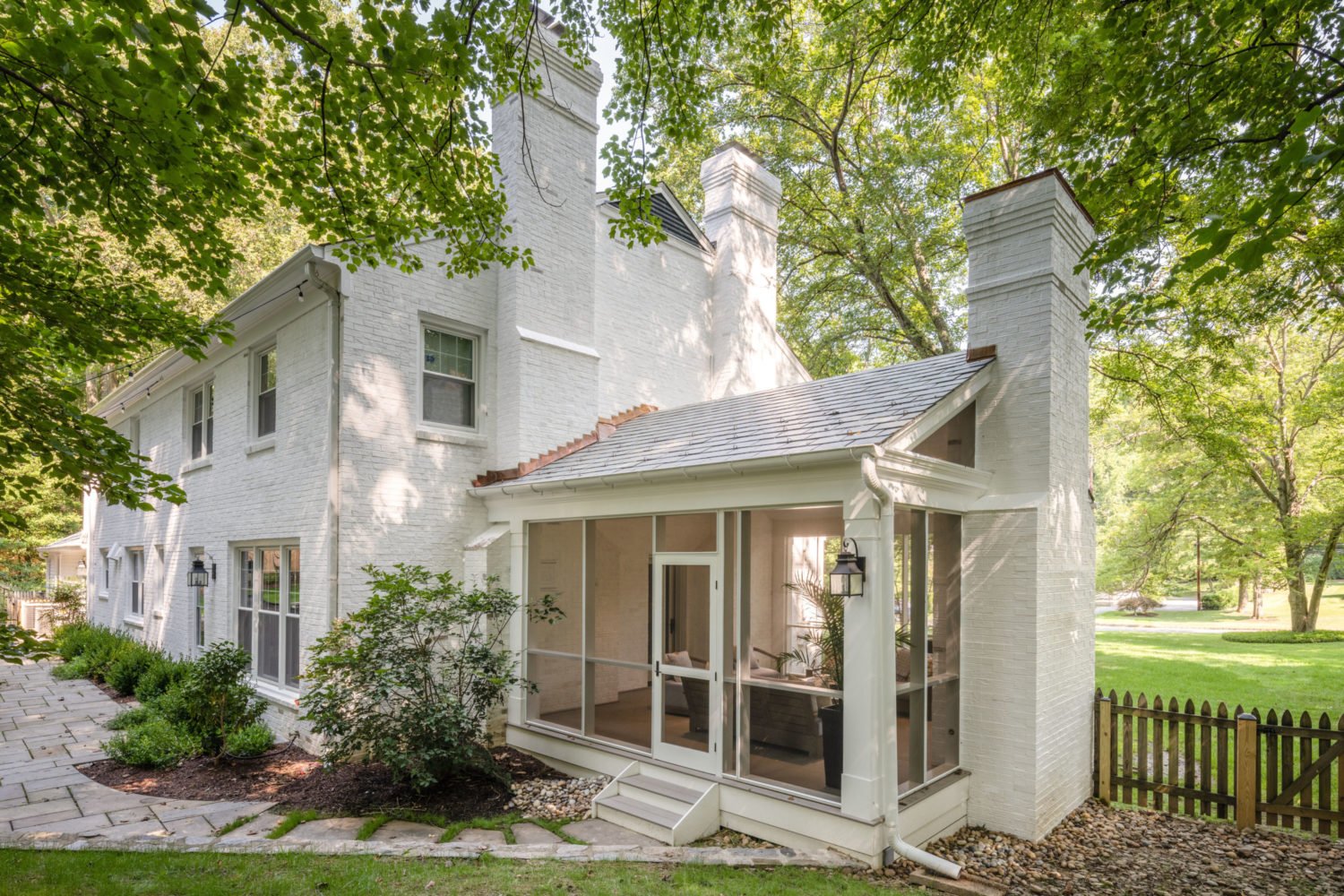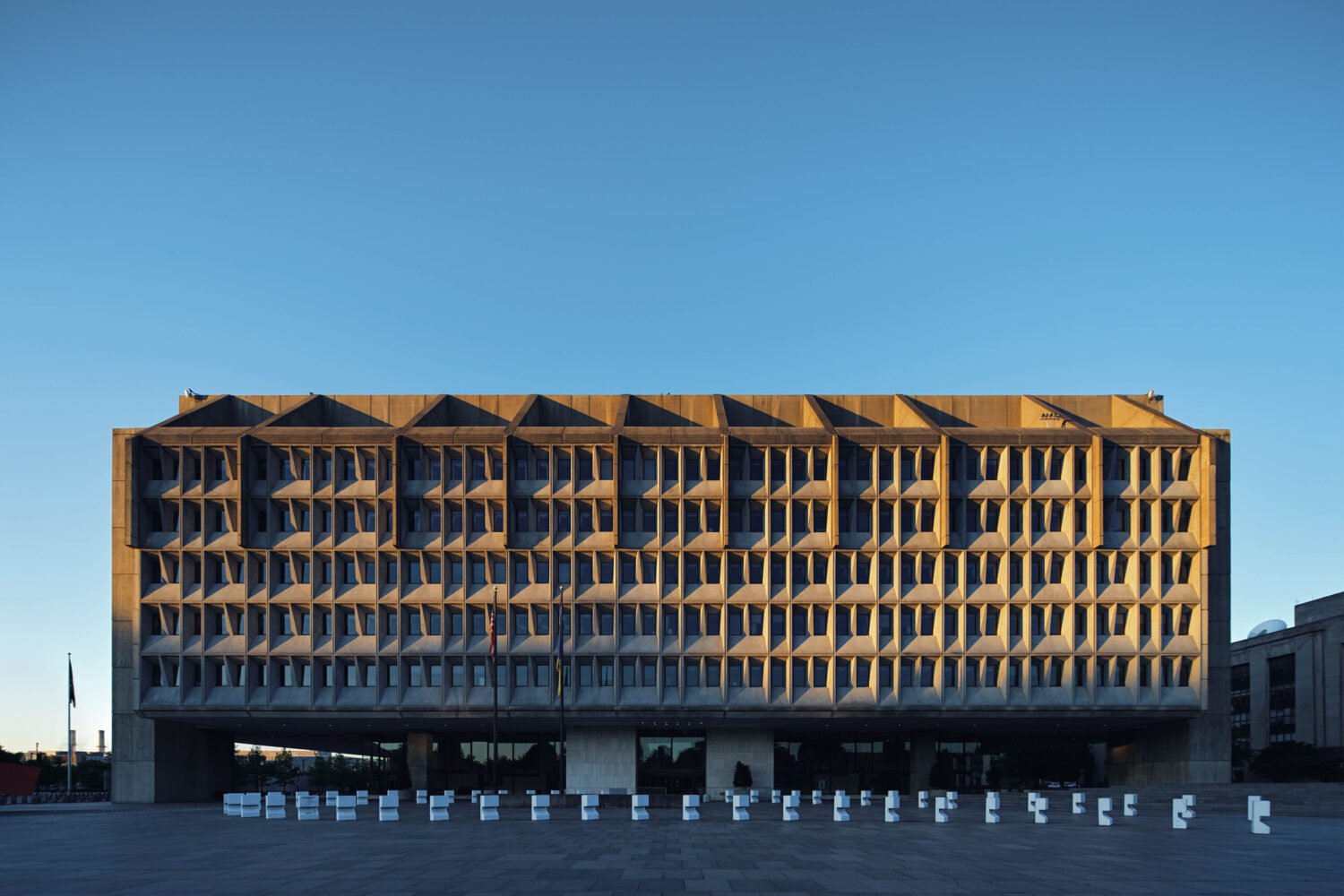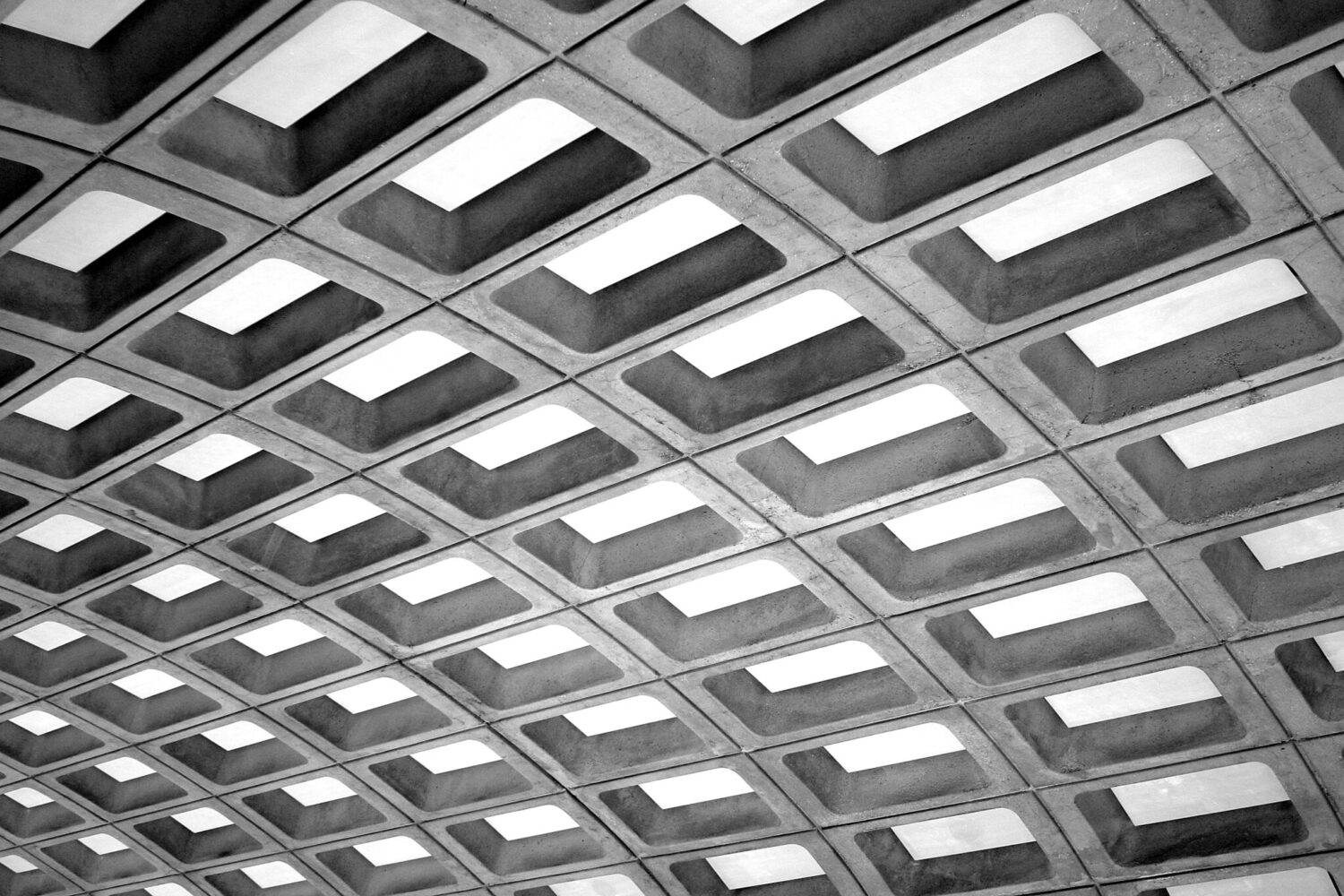Brutalism! Some people love the severe, blocky architectural movement whose relics abound in Washington. Some hate it. But if you find yourself in the former group and just can’t get enough of those mid-20th-century motifs of tight patterns and exposed concrete, you can finally bring them into your home. DC’s most familiar example of brutalism, the ceilings of the original Metro stations, is now available as wallpaper, part of a line of prints turning brutalist designs into home improvement.
Harry Weese’s original design for Metro’s ceilings, featuring the famous rectangular coffers (also known as the “waffle” design), is available as a backdrop for rooms as part of a brutalist line by a British company, Murals Wallpaper. The wallpaper features a high-resolution photo of of Weese’s ceilings, which are present in about one-third of Metro’s 91 stations. Other textures in the line include images of mid-century London high-rises and the Metropolitan Cathedral of Saint Sebastian in Rio de Janeiro.
While the entire Metro system has brutalist features, they’re most visible at the 31 stations that use Weese’s first design. And despite how much neoclassicists bemoan brutalism’s lack of grandeur, Weese intended the coffered vaults that cover the ceilings as a nod to Washington’s abundance of stately, aboveground buildings. The large arched panels in subsequent generations of Metro stations are fine examples of brutalism, too, but not nearly as eye-popping. (Metro has 11 different ceiling and canopy designs, according to Greater Greater Washington.)
Still, outfitting your favorite room to resemble a Metro station isn’t cheap. The wallpaper starts at $35 per square meter; a 12-foot-by-8-foot wall would cost about $312 to cover, for instance. But you’d get the joy of looking at brutalist architecture all the time, without ever having to worry about a delayed train—or Metro painting over the design in the name of “improvement.”


















